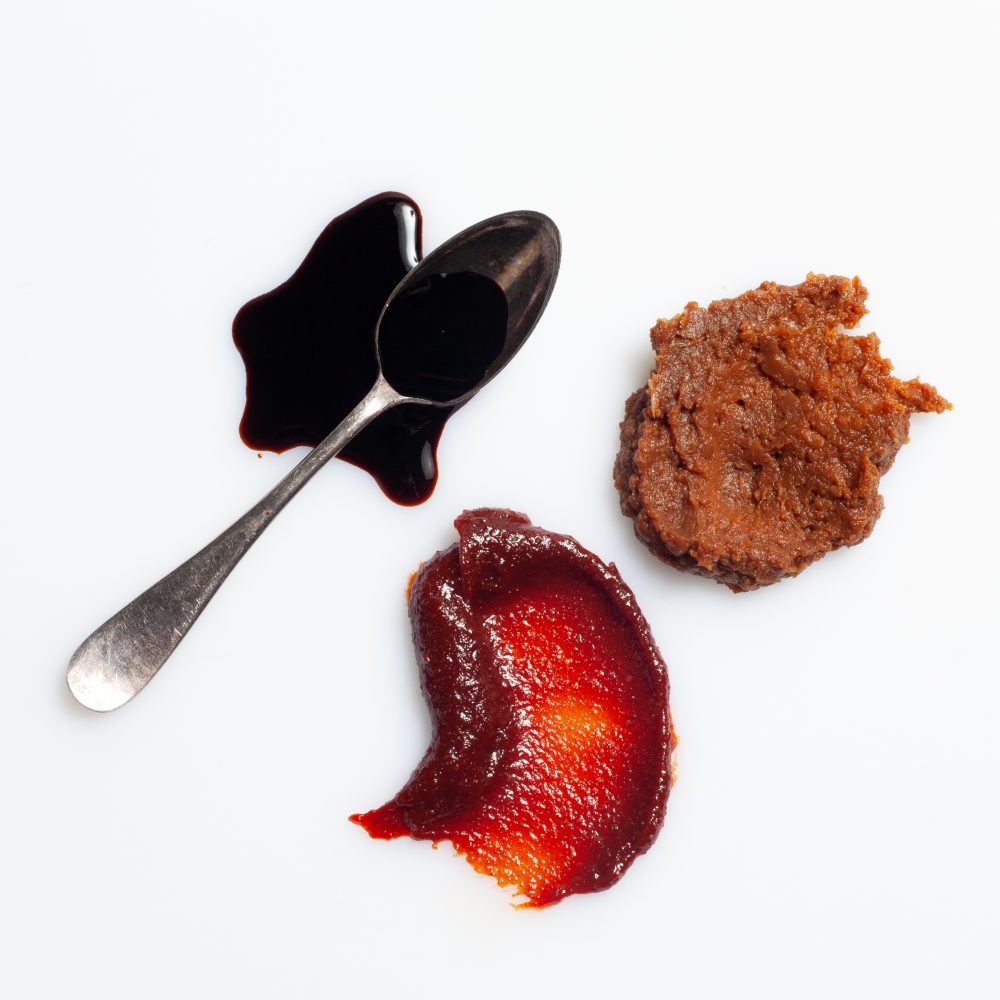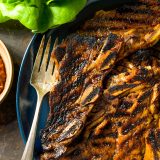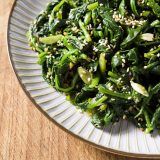In the eight years since Hooni Kim met the farmer in South Korea who supplies his New York restaurants with fermented sauces, or jangs, the man has grown into something of a mentor to the chef, instructing him in the careful and quite ancient art of coaxing deeply funky, savory flavors from simple soybeans.
And it’s a lesson of significance, because those jangs aren’t mere condiments; they are the flavorful undercurrent of just about every aspect of Korean cooking.
At the farm, which Kim visits several times a year to return with supplies to New York, he helps make the jangs, which are fermented and aged in porous clay pots to foster beneficial bacteria that not only create deep flavor, but also are prized for probiotics central to the Korean diet.
The challenge of cooking with jangs—the three core are doenjang, ganjang and gochujang—is twofold:
They contain a tremendous amount of salt, which acts as a preservative, and they are particularly pungent. So, used incorrectly, they overwhelm other ingredients.
In some ways, the approach is the opposite of Western cooking, which generally tries to draw out flavors from more subtle ingredients. Instead, jangs are tamed by balancing them with a combination of bold and bland ingredients, Kim says. That’s why Korean stews are made with water instead of broth, and many include tofu to absorb stronger flavors. Other dishes include both sugar and fruits such as Asian pear to offset the salt. And the table always is set with several banchan, or side dishes. These could include briny pickles and funky fermented kimchi on one end of the flavor spectrum, and lightly seasoned spinach and plain white rice on the other.
Particularly bold recipes might even contain all three jangs, as with yangneom galbi, or sweet-savory marinated short ribs, one of the best known examples of Korean barbecue. It’s managed by pairing the jangs with multiple sweet ingredients, as well as serving the meat with lettuce or cabbage, the fresh crunch of which lightens and brightens all the richness.
In his version, Kim calls for marinating thinly
sliced beef ribs in a puree of sake, Asian pear, garlic, ginger, the sweet rice wine mirin, white sugar
and ganjang, or soy sauce. The meat is tenderized
by the acidity in the sake and the pear, which is
more crisp, tart and naturally sweet than most
Western pears. In fact, if Asian pears aren’t available, Kim recommends substituting a green apple
for the extra tartness.
Once grilled, the meat gets tucked into lettuce leaves with a sauce called ssamjang, which prominently features the other two jangs— doenjang, a soybean paste akin to Japanese miso, and gochujang, a fermented chili paste. His take on ssamjang—which translates to “wrap sauce”— includes nontraditional walnuts, which lend texture, but also bitterness that helps balance the saltiness of the jangs.
We loved the balance of sweet, salty and umami in these ribs, as well as the ease of preparation. The sugar in the marinade allowed us to get a nice char on the thin slices of meat without overcooking, leaving us with crispy bits and tender meat that retained a satisfying chew.
The stir-together ssamjang includes both toasted walnuts and sesame seeds for additional texture and flavor, and we paired our galbi with a banchan of sesame-soy spinach.
But Kim notes that galbi are best enjoyed by adding different kinds of banchan to the wraps, experimenting with combinations that always end up delicious. “There’s no rules. Just enjoy,” he says. “And share.”
“Cooking Korean is about knowing how to control and tame jangs,” says Kim, the chef-owner of Hanjan and Danji. “When you taste them raw, the flavor is like kryptonite it’s so powerful.”
Korean Pantry: The Tale of Three Jangs
Three fermented soy-based sauces known as jangs form the pungent flavor base of Korean cooking. “That is the holy trinity of mother sauces of Korean food,” says Hooni Kim, author of “My Korea.” “Almost 99 percent of Korean dishes have one or two, or sometimes all three.”
Doenjang is a fermented soybean paste similar to Japanese miso. But miso is milder, smoother and sweeter, while doenjang is stronger and more pungent. To make it, cooked soybeans are formed into blocks called meju and fermented for up to three months.

The meju is combined with a salt solution, then aged again in large clay pots called onggi. The solids that sink to the bottom form the doenjang, while the liquid at the top is ganjang, similar to soy sauce.
The third sauce, gochujang, is a red paste with a texture and savoriness similar to doenjang, but with a spicy chili kick. Meju is mixed with ganjang, sticky rice, salt, malt and chili, then fermented in the onggi, which are left outside in the sun for at least six months or up to five years. The onggi are porous, which helps foster fermentation for deeper flavor.





